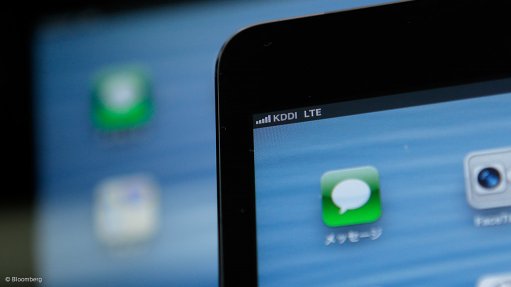
Photo by: Bloomberg
Analysts are forecasting that there will be 80-billion connected devices in the world by 2020, with a global Internet economy valued at $14.7-trillion.
The Global Community of Growth, Innovation and Leadership – GIL Africa, has sketched a radically shifting world, in which there will be far more industry convergence, product convergence and convergence of competition.
Frost & Sullivan senior partner Dorman Followwill told the GIL Africa conference in Cape Town that former competitors were starting to work together far more instead of competing on many fronts.
“The market growth trends are nonlinear. There is an explosion around big data,” said Followwill. Around 90% of the data in the world has been created in the last two years alone.
In addition to the overall growing connectivity and convergence trend, he noted that multiple subtrends also continued to emerge, such as personal robots, wearable devices, machine-to-machine communication in factories and three-dimensional and four-dimensional printing.
Wearable computing included blood pressure monitors, human emotion trackers, military wearables, smart watches, infotainment sensors and fitness bands.
However, Followwill said there were some concerns about these devices inhibiting personal freedom. He said the Apple watch was testament to this, as the uptake had not been as high as expected.
Another fast-approaching subtrend is the move from first-generation to fourth-generation and fifth-generation (5G) mobile technology, which could see a one hour-long high-definition movie being downloadable within six seconds and a 90% energy saving per service.
“5G is coming and it’s coming with ultraspeed,” said Followwill.
Tremendous opportunities existed in Africa – the fastest-growing mobile phone market in the world.
By 2025, Frost & Sullivan believes there will be four-billion connected devices on the continent, with 600-million Internet users. Cellular connections will continue to climb to 1.23-billion, with an 83% penetration on the continent anticipated by 2025.
Total spending on information and communication technology was also expected to rise, reaching an anticipated $305-billion by 2025 and accounting for nearly 7% of the continent’s gross domestic product – up from 2% in 2014.
Other trends in Africa included a continued rise in social media.
“Facebook will continue to have a massive expansion in Africa. We expect 213-million Facebook users in 2025, with 80% of people accessing Facebook through a handheld device.
Followwill said he also saw big opportunities in homegrown social networking sites in Africa – connecting Africans to Africans on African-built platforms.
Already the mobile payment market had revolutionised payments in Kenya, with 68% of Kenyans using the mobile phone-based money transfer and microfinancing service M-Pesa. Frost & Sullivan said there are likely to be 520-million mobile payment users in Africa by 2020.
Virtual currency would help African traders, particularly those dealing with a variety of currencies and no regional payment systems.
Frost & Sullivan president Aroop Zutsi told delegates at GIL Africa that the future will be a lot more complex and dynamic, with some traditional careers set to fall away.
“We are seeing technology collapsing and transforming companies.” He cited mobile phone ridesharing app Uber as an example of a platform that completely disrupts an industry that has been moving in one way for decades.
He said companies needed to prepare roadmaps for the future to deal with convergence in many spheres.